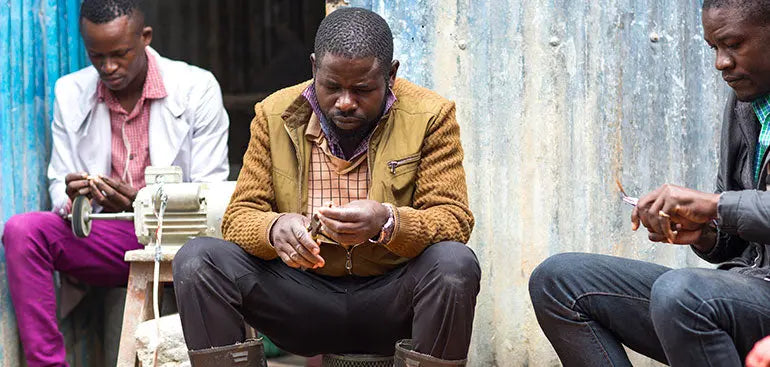Creating a Story of Beauty and Empowerment:
Jewelry “by everyday people, for everyday people”
The (Dual) Problem:
In Dagoretti Market, Elijah works relentlessly in the mounting heat of Nairobi: hammering away at sheets of brass, cutting them into thin shapes, rolling these out on a cylindrical piece of wood. As he creates, his concentration so sharp you could use it to cut through the brass in his hands, his work slowly comes together to form the intricate, delicate artistic designs that will end up adorning someone’s hands or neck. In Kibera, Ojiko does the same.
The same scenario plays out as many jewelry makers in low income areas, labelled by many as ‘slums’, painstakingly create beauty with their hands, some as independent contractors, others in group workshops run by luxury jewelry brands.
Being independent jewelry makers in these disadvantaged areas, these artists depend on employers to give them access to larger markets. And while the jewelry industry in Kenya thrives on the labour of artists like Ojiko and Elijah, their salary is dependent on the whims of their employer and often is only a very small proportion of the profits their work would generate.
On the flip side, their jewelry pieces are mostly aimed at high-end luxury stores, selling at prices that are exorbitantly out of reach for many everyday people.
The Dual Problem: the need for more enterprises to offer a just wage to jewelry makers and the desire to make their beautiful work accessible to everyday people.
Our Artisan's Work


















